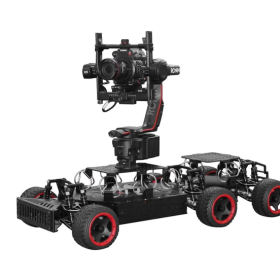
If this happens, the task of moving these into a live bookkeeping category upon project completion is simple. The subcategory helps identify which main category they go to and no further analysis is needed. This can be quite a time-consuming task if the right information isn’t available. Once construction is complete, transfer the CIP account to the appropriate fixed asset account, and begin depreciation. Once the construction is complete, the CIP account transitions to the appropriate fixed asset account, and depreciation begins. This accounting account tracks and gauges expenses concerning fixed assets being constructed or put together during the building stage.
Types of Assets Under Construction

Most companies hire a chief financial officer to maintain these records and avoid costly accounting errors. Accountants do not begin tracking depreciation of construction-in-progress assets until the addition is complete and in service. As a result, the construction-work-in-progress account is an asset account that does not depreciate.

Effective CIP Accounting for Modern Construction Projects

The basics of accounting for construction companies also include revenue recognition and cost allocation. For professional assistance with CIP accounting or cip meaning accounting GAAP compliance, contact PVM Accounting today! In this blog, we’ll explore how CIP accounting works within the GAAP framework, why it’s essential, and how to apply it to your construction projects. This method keeps the CIP account balanced and accurately reflects total project costs. Tracking costs in CIP accounts helps monitor project expenses closely, identify potential budget issues, and make necessary adjustments early. This proactive approach supports better budgeting and financial planning for future projects.

How to Use Construction-in-Progress Accounting

We have also provided examples to illustrate its application in real-world scenarios. By capitalizing costs in progress, businesses can reflect the true value of ongoing projects, assess project feasibility, and ensure compliance with tax laws and regulations. CIP accounting and Work in Progress (WIP) accounting are often used interchangeably, but they have different meanings. When the project is complete, the account is closed, and any remaining balance is transferred to the Cost of Goods Sold (COGS) account.
- Whether you’re a contractor, financial manager, or accountant, understanding CIP accounting ensures accurate financial reporting and effective project cost control.
- Construction projects today are more complex and larger in scale than ever before, making effective accounting practices crucial for success.
- We specialize in construction financial management, helping businesses build a stronger financial future.
- Specialized construction accounting software can automate cost tracking and ensure compliance with GAAP standards, reducing manual errors.
- Unlike finished projects, CIP is recorded as an asset on a company’s balance sheet until the project is completed and capitalized.
- Before we dive into the details, it’s important to note that accounting terminology can sometimes be complex and confusing.
How to record construction-in-progress charges
This article has focused on how to account for AUC in your fixed asset register, however, there needs to be a good control of overall project expenses from the start. From the planning and commitment stage, through to actual spend, the correct control should be in place early on, using appropriate systems to provide good quality, timely information. This will help ensure budgets are adhered to and spending doesn’t spiral out of control. Specialized construction accounting software can automate cost tracking and ensure compliance with GAAP standards, reducing manual errors. Periodic reviews of CIP accounts ensure that all expenses are accurately recorded and allocated. Discrepancies can be identified and corrected https://www.bookstime.com/ before they impact financial statements.
- However, once the project is completed and the costs are transferred from CIP to fixed assets, depreciation begins.
- Environmental impact fees and permit fees also appear in the CIP balance, as do any bonding costs.
- After all, you have incurred the cost and own the items and they usually add value to the business, even in their rawest form and before they start being used.
- We hope you can apply the above information about CIP accounting to your accounting process.
- For CIP, costs are capitalized during construction and expensed as depreciation once the asset becomes operational.
- However, preparing accurate reports is not simple for construction companies whose work-in-progress assets are unique.














